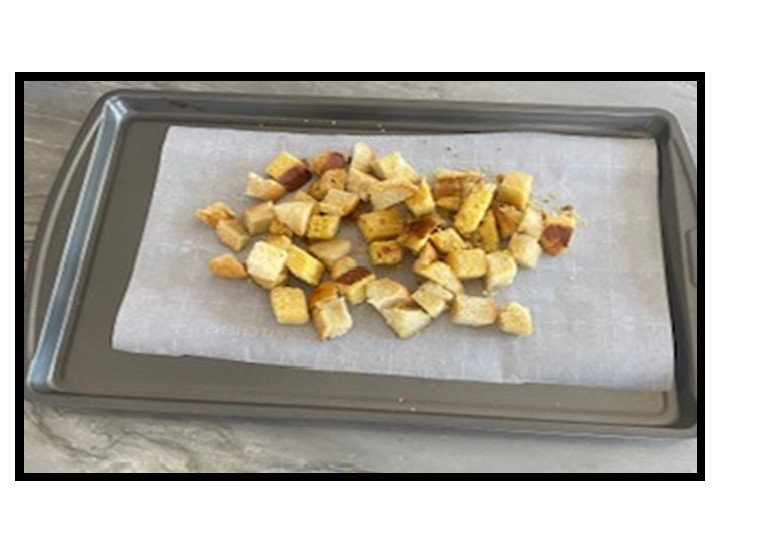Making Nutritious Dishes From Food You Might Otherwise Waste

Food waste is a major environmental issue in the USA, costing the average family of 4 $1,600 per year. The food we waste, approximately 25 % of the food purchased by a typical family, creates a disastrous impact on our environmental footprint. Check out stopwaste.org for more information about how you can combat food waste.
Shopping strategically and using leftovers are, of course, great ways to use our food resources efficiently. Additionally, there are some fabulous hacks for stretching that food budget even further, while adding nutritious extras to your family’s diet.
Bread. Bread is one of the most wasted food products in our country, but there are so many things we can do with stale bread! So every time you have leftover bread, stash it in the freezer for later use and try one of these tricks:
-
Croutons. Cut stale bread into cubes and lightly bake it with olive oil and spices before adding it to salad.
-
Bread crumbs. Grind stale bread into tiny crumbs for a perfect coating for chicken or a crunchy topping for casseroles. Season the crumbs to your own taste and bake them at 300 degrees for about 10 minutes.
-
Thickener. Add bread to soups to thicken; add crumbs to meatballs to help them hold together and stretch that meat budget even further.
-
Bread pudding – my personal favorite. Check online for recipes for this sweet, filling, comfort food treat!
Coffee. Don’t empty that coffee pot down the drain!
-
Iced coffee. Pour leftover coffee over ice and add a little milk and sweetener, and you’ve saved yourself a trip to the local coffee shop!
-
Coffee flavoring. Freeze that leftover coffee in ice cube trays and add it later to baking and marinades (coffee grounds can also be used as a rub for meat dishes).
-
Garden. Even your plants love coffee – and coffee grounds. This nitrogen rich treat feeds plants, repels pests and makes excellent compost.
Overripe fruit. We’ve all had fruit that suddenly goes to mush, especially in the summer when the heat speeds up ripening. Try one of these:
-
Smoothies. Blend any leftover fruit into a nutritious kickstart to your day. You never even need sweetener, though you might like to add carrot, chard, kale or other veggies for an even healthier smoothie. Make a large batch, mix it with yogurt and freeze some for a delicious home-made frozen yogurt treat.
-
Baking. Use over-ripe fruit in cobblers, breads, cakes and cookies.
-
Juice. Use a juicer or blender to juice that fruit. With lemons and limes, freeze the juice in ice cube trays and add later to water, tea or any recipes that require citrus flavoring.
Veggie peels
-
Broth. After you wash and prep veggies, save the skins and ends. Collect scraps from carrots, onions, garlic, celery, peppers, herbs, etc., and freeze them. When you’ve collected a gallon bag full, add 4 cups of water, bring it to a boil and simmer for at least 30 minutes. Strain the liquid and use it as a basis for soup – or freeze it for later use. Don’t forget to throw the veggies scraps into your compost! Hint: avoid broccoli, cabbage, cauliflower or any other strong smelling vegetable.
-
Potato and sweet potato peels.Toss the peels in a little olive oil and salt and bake until crispy! Yum!
Citrus skins.
-
Peels. Use a potato peeler to peel the colorful outer rinds of oranges, lemons and/or limes. Freeze or dry the peels and add to your water glass for flavor or use in baking or cooking. Be even more adventurous and make candied peel for a sweet treat.
-
Zest: Use a grater or zester to collect citrus zest and add it to baking to enhance flavor. This can be frozen for later use also.
Brown avocado. Don’t throw away that mushy brown avocado! Avocados are expensive! Check the internet for recipes for face and hair masks and nurture your skin and hair.
In a nutshell, stay creative and curious, and ask yourself, “How could I use this?” before chucking it out. Speaking of nutshells, they make excellent mulch for your garden or houseplants ( but avoid black walnuts, as they are toxic to some plants).
This blog was brought to you by guest blogger Anne. Anne has worked as a school administrator for years and brings us a plethora of education advice. Thank you Anne for helping Compass FAH to achieve our goal to provide education to empower and enrich the lives of individuals residing in affordable housing. To learn more visit our website at Compassfah.org.

